#phosphorus deity
Text




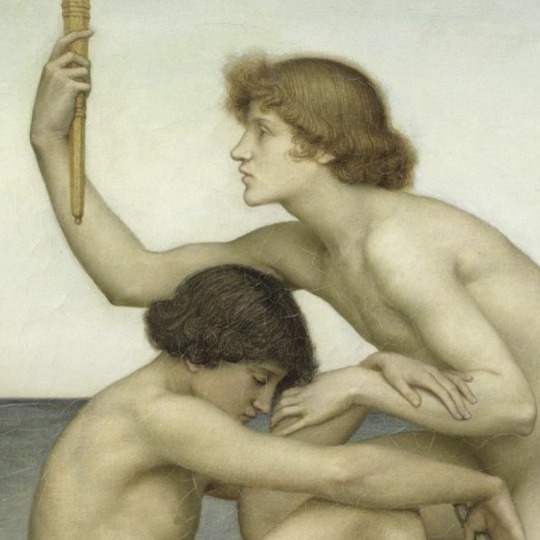

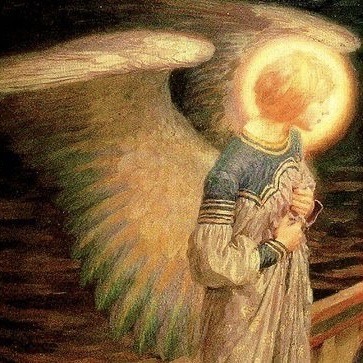


What is love? It is the Morning and the Evening Star.
— Sinclair Lewis
#greek mythology#greek gods#greek pantheon#hellenic polytheism#hellenic#hellenic gods#hellenism#greek myth#ancient greek mythology#hellenic deities#hellenic worship#hellenic polythiest#hellenic pagan#theoi#theoi worship#helpol#greek deities#moodboard#aesthetic#phosphorus#phosphorus deity#lucifer#lucifer deity#deity work#deity worship#pagan#paganism#Eosphorus#hesperus#hesperus deity
295 notes
·
View notes
Text
he keeps waking me up at dawn
to sit with him
ponder him
gaze in awe at him
contemplate him
learn about him
to just
Be
next to him
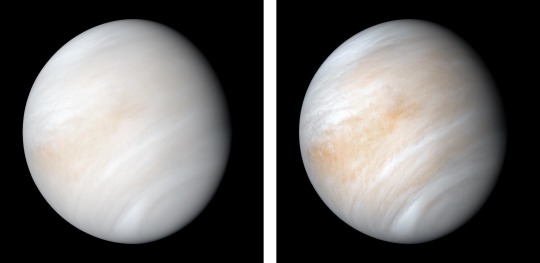
#lucifer deity#phosphorus#skáti shit#kata shit#kat shit#witchy tings#devotionals#star of venus#light bringer#morning star#torch bearer
2 notes
·
View notes
Text
Where once we were all pretty much farmers, or very close to the land, and we rotated crops, studied yields, used livestock as land fertility aids and worshipped soil gods over lifetimes, not just financial years, now we just ring up the agronomist and order NPK. Where we once all felt, in our hands and backs and stomachs, the health of the soil that nurtured us, now we look at spreadsheets and averages and statistically relevant results. For a while, we lost the gratitude our forebears had for the soil they worked, the land they trod, the wisdom they garnered by growing stuff and watching the earth with more than passing interest, and more of a survival instinct.
"Soil: The incredible story of what keeps the earth, and us, healthy" - Matthew Evans
#book quotes#soil#matthew evans#nonfiction#farmers#farming#crop rotation#crop yields#livestock#soil fertility#deities#lifetime#financial year#agronomist#agronomy#npk#nitrogen#phosphorus#potassium#soil health#spreadsheets#statistics#gratitude#forebears#ancestors#survival
0 notes
Text
Hekate Correspondences According to Hekate Liminal Rites by Sorite d'Este
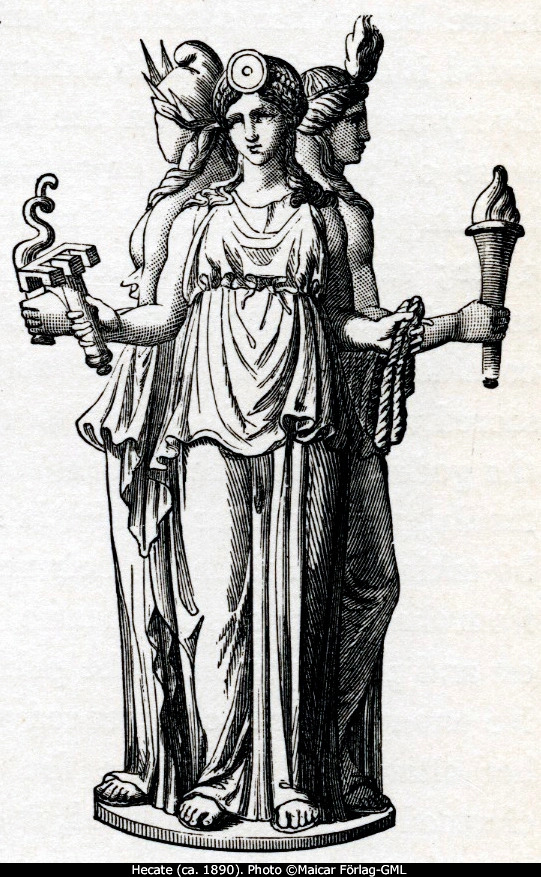
Goddess of: Crossroads, thresholds, boundaries, transitions, dreams and nightmares, oracles and divination, life and death, the restless dead, witchcraft and herbalism/poisons, protection, childbirth, the heavens, sea and earth.
Epithets: Chthonia (earthly one), Dadouchos (torch-bearer), Enodia ('of the wayside' or 'of the crossroad'), Kleidouchos (key-bearer), Kourotrophos (child's nurse), Phosphorus (light-bearer), Propolos (companion), Propylaia (the one before the gate), Soteira (savior), Triformis (three bodied), Trioditis (of the three ways), Brimo (angry/terrifying), Nexichthon (she who breaks open the earth), Prytania (invincible queen).
Symbols: Keys, torches, the moon, lunar crescent diadem, bronze/brass (her sacred metal), iron (particularly nails), bronze or golden sandals, virgin, garland/wreath, scorge, whips, sickles, swords, knives, wands, things done in threes, the strophalos, white, black, red, and saffron yellow.
Animal Associations: Lions, (black) dogs, horses, cows/bulls, hydras, snakes, bats, and dragons.
Plant Associations: Rue, laurel, cumin, sesame seeds, cornels, asphodel, maidenhair, rushes, galangal, verbena, sage, hedge-mustard, purple honeysuckle, cassidony, field basil. mandrake, hulwort, dittany, saffron, nose-smart, lion-foot, greenbriar, camomile, black poppy, alcua, all-heal, white hellebore, aconite, oak, ebony, garlic, and cypress.
Deities She's Worshiped With: Demeter and Kore (Eleusinian mysteries), Poseidon, and Hermes.
Deities She Absorbed: Brimo, Despoina, Enodia, Genetyllis, Kotys, Kratais, and Kourotrophos.
Deities She's Syncretised With: Artemis, Selene, Mene, Persephone, Physis, Bendis, Bona Dea, Diana, Ereschigal, and Isis.
Offerings: Dogs, goats, lizards (this can be something in their shape), incense and fragrances, resins like frankincense, myrrh, and storax, wafers and cakes, barley cakes, honey, vegetables, first fruits, flowers, fish like sprat and mullet, wine, milk, blood, oil, water, raw eggs, bread, cheese, and cheesecakes.
Types of Magic Historically Attributed to Her: Rejuvenation of the old, control over weather, necromancy/raising the dead, purification, love/binding/relationship destroying magic, invisibility/to move unseen, shapeshifting, control over animals, herbal/poison magic, and divination.
#hekate#hecate#hellenic#hellenic polytheism#pagan#paganism#paganblr#helpol#hellenism#hellenismos#theoi#correspondences#polytheism#polytheistic#hellenic gods#hellenic religion#riley cackles
737 notes
·
View notes
Text
Lucifer
Lucifer is a Latin word coming from the words lux, meaning light, and fero, meaning to bear or to carry. Literally translating to light-bearer.
Lucifer as a Roman Deity
Lucifer has had many faces throughout history. One of these being the Roman deity of the morning star, or Venus, considered the male equivalent of the goddess Venus. He is attributed to being the god of enlightenment and illumination. Lucifer is often depicted carrying a torch, and said to be equal in beauty to the goddess Venus. Due to being the morning star, I can also see Lucifer being associated with war as well. Especially considering his association with learning and knowledge, as well as that Venus also historically had war epithets.
In the Greek pantheon, they separate the morning star and the evening star into two seperate deities, being Phosphorus/Eosphorus and Hesperos. Eosphorus meaning “dawn-bringer”, and Phosphorus meaning “The bearer of light”. Phosphorus and Hesperos are the sons of Eos, Goddess of dawn, and Astraios, God of dusk. Phosphorus is the father of the Hesperides, nymphs of the evening time and light of the sunset.
Lucifer in Abrahamic Religions
Historically, Lucifer was never mentioned in the Bible at all. His name being associated to Christianity nowadays is due to a mistranslation of a poem about a fallen king. However, he is a big part of Christian culture now, and there are myths associated with him.
Lucifer was said to be the most beautiful and intelligent of God’s angels. He was God’s right hand. Until he defied God. There are many different versions of the fall of Lucifer.
One version of this story says that Lucifer became overly prideful of himself, his beauty, intelligence, power, that he thought himself worthy of being worshipped equal to God. Because of this, God cast him out of heaven.
Another version is that Lucifer was jealous of Jesus Christ. He gathered the angels and brought forward the idea of worshipping him instead of Jesus. Some of the angels sided with Lucifer, while others did not. There was a meeting between God, Lucifer, and all of the angels in which God said that their rebellion was unforgivable. There was a war between the two sides, but ultimately God and his angels won. Lucifer and the angels who followed him were banished from heaven.
Lucifer in Modern Witchcraft
In more modern witchcraft, there is a tradition which states that Diana, queen of witches, created Lucifer when she split herself into two pieces, darkness and light. She kept the darkness for herself, and Lucifer kept the light. Lucifer and Diana also have a child, Aradia. In this tradition, Lucifer is seen as the god of light, and masculine energy. One of the most influential sources for this tradition is The Gospel of the Witches by Charles Godfrey Leland.
Lucifer in Demonolatry
In demonolatry, Lucifer has many titles. Prince, King, Emperor, Lord. Lucifer is a demon of transformation, enlightenment, awakening, self-discovery, self-empowerment, and more. He is usually attributed to the element of air, and also pride.
Lucifer’s Associations
Anything with the * symbol next to it means that it is my own UPG.
Animals:
Snakes
Rams
Peacocks
Corvids (crows, ravens)
Cats
Spiders
Moths
Colors:
Black
Grey
Gold
Red
Teal
Blue, especially pale blue*
Purple*
Crystals:
Obsidian
Onyx
Hematite
Celestite
Seraphinite
Garnet
Sunstone
Clear quartz
Carnelian
Ruby
Copper
I am aware that copper isn’t a crystal.
Plants:
Apples
Pomegranates
Roses
Cinnamon
Cloves
Lavender
Blackberries
Sage
Black pepper
Garlic
Lilac
Spicy peppers*
Other:
Stars
The number 7*
Spring equinox
Autumn equinox*
Offerings
Strawberries
Blackberries
Chocolate
Apples
Pomegranates
Honey
Spicy foods*
Sweet things, especially baked goods
Juices, especially apple or grape
Coffee
Roses
Feathers
Devotional Acts
Shadow work
Learn about the sciences or the arts
Create art of any kind
Face your fears
Learn about any of his associated animals
Magical workings, especially those that fall under his sphere of influence
Learning in general
Developing your psychic abilities and spiritual senses (the clairs)
Spiritual progression
Anything marked with the symbol * means that it is my own UPG
219 notes
·
View notes
Text
I'm currently in an "Ettore and Cyprian are descendants of the Sun King" conspiracy theory spiral, and I found a connection between that theory and Cyprian's name! So, in a previous post, I talked about how Cyprian used to mean "a prostitute, a lewd woman, a harlot" or "lewd, licentious, wanton." And the reason behind this meaning is because Cyprian references the island of Cyprus, where people used to worship Aphrodite, Goddess of Love and Sex, in ancient times. So, how does this connect to Ettore or the Sun King?
Well, the villagers call Ettore "il Diavolo" or the Devil. The Devil is also known as Lucifer, who was also known as the "shining one" or the "morning star." According to Wikipedia, the name Lucifer" corresponds to the Greek names Phosphorus Φωσφόρος, "light-bringer", and Eosphorus Ἑωσφόρος, "dawn-bringer". But Lucifer did not refer to just any star, it was "the Latin name for the morning appearances of the planet Venus." The goddess Venus is the Roman counterpart of the goddess Aphrodite!
So, there are two ways in which this connects Ettore to Cyprian and vice versa. First, because of that connection to Venus/Aphrodite. And second and more obvious, a Star is the symbol of the Stewards. As the last Steward (besides Ettore), Cyprian is referred to as the "last star". But how does this connect to the Sun King?
Well, the Sun itself is a star. Furthermore, the imagery of the morning and the dawn that the name Lucifer brings with it is associated with the Sun. In Greek and Roman mythology, Lucifer was connected to many deities, including Sol, known as Helios in Ancient Greek. Much like Lucifer is known as the "shining one", Helios was often given the epithet of Phaethon, which means "the shining". Lucifer the Shining One and Helios the Shining. Notably, during one of Will's memories as Sarcean, the Sun King is described as "a Helios on a chariot."
So, in a very convoluted way, I have connected Ettore, Cyprian, Lucifer, and the Sun King all together 😅. Also, there's this passage at the end of Dark Heir that subtly suggests the Lady, the Stewards, and more specifically, Cyprian will continue the light bringing of the Sun King:
"The Light?" said Sarcean. "Today I have put out the sun."
"Light is not something you can extinguish," she said. "Even in the darkest night, there is a star."
Will gasped and came back to himself.
Cyprian stood in front of him, holding a sword.
Interestingly, this connection to the Sun King, the Light, and Lucifer also touches the Blood of the Lady. Visander calls Elizabeth "Lightbringer," which is possibly an even more direct reference to Lucifer than Ettore's nickname. There could also be an argument that James/Anharion's "fall from the light" is also a subtle reference to Lucifer. What does this all mean? I can't say. Maybe nothing. Maybe everything 👀
29 notes
·
View notes
Note
Hello! I can’t find the answer on internet… what is the difference between Lucifer and Satan? Cause Lucifer is fallen angel, is satan just a name for all the main demons? Or what? Lucifer is satan but Satan isn’t Lucifer, right? Sorry I’m lostttttt
I read this question when it was sent but I forgot to answer, sorry!
Lucifer has many masks. He is the embodiment of the morning star (planet venus) and the roman god of witchcraft consort of Diana, he is an infernal king, he is associated with some greek gods like Phosphorus/Eosphorus or also Prometheus, and some other people associate him with other deities or entities (like Seth from kemeticism, egyptian mythology).
While Satan, it depends. It is only a title, meaning adversary of God, so basically all demons can be called that way. But theistic satanists believe that there’s an actual infernal with that name (I believe it too), but just because we don’t know his “real” name.
So they’re two different entities in my perception, while in christianity they see them as a whole, so Lucifer as a fallen angel who then became adversary of God, so then named Satan.
#luciferian#theistic luciferianism#theistic satanism#working with lucifer#lord lucifer#lucifer#satan
14 notes
·
View notes
Text
All-Stars Images in Super Smash Bros
I love how much story/personality is added in Smash Bros for Kid Icarus Characters.
Like Kid Icarus is one a of the few franchises where Smash bros is Canon to it's story and it really shows. With chants of "Pittoo" when Dark Pit is winning, them talking about smash in Uprising, etc etc. But there are so many smaller details that are so cool too.
The main one I want to talk about is at the bottom so you can skip there
One of my favourite smaller details is the Screencaps and Congratulations Screens
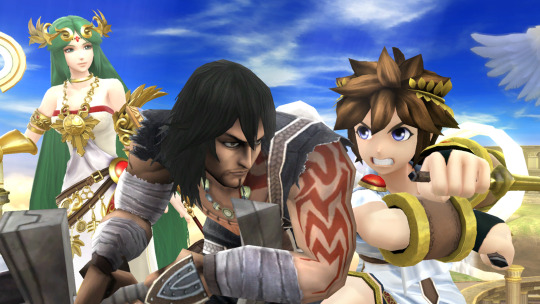

The two screen caps have Magnus.
Magnus (with Palutena) shows up in two Screencaps, one with Pit and another with Dark Pit. And you can tell which one of them spend time with him.
In Pit's, Magnus just looks determine on fighting who he's meant to be fighting (default face) but Pit look so unnecessary aggressive it makes it funny. But I also enjoy how Palutena is looking from a far, like watching over, which gives off the vibes of her role in Uprising, watching over Pit and his shenanigans but rarely being directly involved.
In Dark Pit's, he's barely addressing Magnus (only time they interacted I believe) which makes sense but what's so funny is Palutena is wearing black. Did she want to match Dark Pit???? Both of them?? The idea that she wanted to change colour quickly. Great. She also is more action based here. Ready for battle!!

Another Screencaps with Phosphora. It's just fun to see them together after KI:U. The effort to make them strike similar poses. Hanging out to beat people or each other. Did Viridi approve this? Haha. I also just really like this Image, in front of the world, Light and Lightning.
Having Magnus and Phosphorus are in smash can make things interesting, assuming it's voluntary.
There are screencaps for Events too that are also cool.

'Doppelgänger Duel' Event.
(what a suprise there)
Showing Dark pit posing which oddly makes him less ready for battle then Pit who's ready to go. Hah.
Also reminds me of Together Mode from KI:U

'An Offering of Coins' Event
This Screencap is interesting cause obviously the connotation here is "offerings to a deity" but having both Pit and Dark Pit is what makes it interesting to look into. In Smash Dark Pit is shown more toned down, and more willing to hijinks as oppose to being baffled by them in KI:U. A lot of his screencaps are more silly. Though still a good amount of the two of them fighting though.
And the two All-Stars Wii-U Congratulations Screencaps.
In both Palutena and Pittoo's Screencap Pit. Though two very different situations.

I don't need to go into this one too much haha. While it's funny that Palutena's Congratulations screencap is such a silly one (bunny ears, flowers, Pit's blushing etc), but not all that surprising.
Though it much be interesting to be in person with Palutena in Smash, as in all Kid Icarus Games they are almost never together in person.
One of the main scenes in game that they were together for was when Pit was literally unconscious/dead.
Smash must be a really unique experience in that case for Pit. And Palutena too.
Though the main screencap I wanted to talk about was this.

Dark Pit's Screen has very different vibes, and why I looked into screencaps in the first place.
You kind of expect his screen to be him fighting Pit or him doing a cool pose but no. It's just sitting there, with Pit by his side.
At first glance this may look boring but it's actually really fascinating.
Pit has his weapon down and looks like he's almost falling asleep, besides Dark Pit of all people. Now they are allies (friends) at the end of Uprising, but they still come off as bitter rivals, with other images of them fighting, Palutena's Guidance, even Dark Pit's introduction is slightly sinister and yet, his screen cap is just the two of them sitting there.
But probably the most important detail is that they aren't just sitting there. They're on a plane, they're flying together. Sure, it's not in the normal sense of how they would do it with their wings but it still is flying. Almost like the ending of Uprising. But without Palutena or Viridi (or Pandora for Dark Pit). Just them two, enjoying flying together.
And flying is a very personal thing for both of them, (which I plan to talk about soon,) so them sharing a moment such as this is sweet. So for all things to be for Dark Pit final victory screen for All Stars. It's just him and Pit, enjoying flight.
It also gives the idea that Dark Pit has become more open since Uprising.
#myth conversations#myth analyses things#kid icarus#kid icarus uprising#super smash bros#dark pit#palutena#pit kid icarus#main three here#tell if there are any mistakes here
34 notes
·
View notes
Text
Build A Lesbian: Name Suggestions/Lore
We've done it! Our lesbian Salamander is done! Here she is in formal wear and a sketch of her work clothes. She's a copper smith (brownsmith) working with copper, tin, brass, and sometimes pewter. While iron was the undisputed king of "base" metals, most middle and upper class people's items for everyday use would have been made of brass and later pewter.

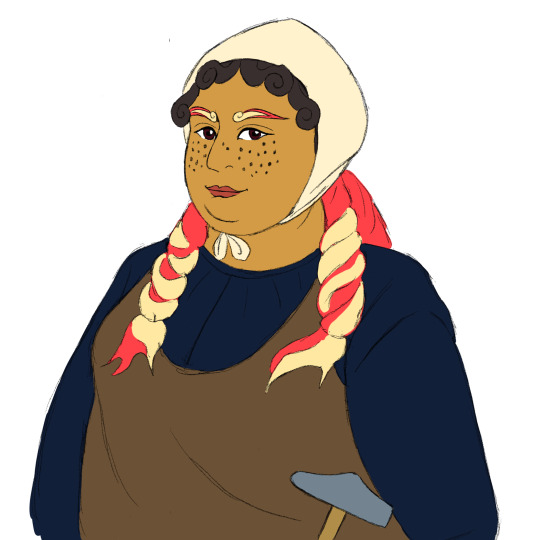
All she needs now are a name and a partner. Feel free to suggest names for her in the comments!
Potential names:
Brigid, Roxane, Barbara, Leoma, Glanis
Known Salamander names (alchemy, religion, influential literature)
Male: Oromasis, Apollyon, Helios, Mars, Vulcan, Proteus, Moroni, Djin, Porphyr, Phosphorus, Pyrhum, Aphtiph, Orudu, Itumo, Coroman, Tapheth, Oriman, Amtophul
Female: Amethysta, Fiammetta, Vesta, Serpentina, Aurora
The salamander was documented in the natural philosophy texts of Classical Greece and Rome. People believed it lived in fire, but attributed it to its body emitting such intense cold that it would extinguish the fire and allow the salamander to remain unharmed. The salamander was also believed to be highly poisonous, being able to poison an entire tree or well if it made contact. This gave the salamander a reputation as a popular magical familiar.
It was Paracelsus who introduced the concept of the Salamanders being the embodiment of fire. Paracelsus' Elementals, as described in his A Book on Nymphs, Sylphs, Pygmies, and Salamanders, and on the Other Spirits, are sentient beings with magical powers who lived within and embodied the four classical elements. However, they differ from humans in that they had no immortal soul which could enter Heaven, and only by marrying a human and receiving Christian sacraments could they have life after death. In a less religions and less Christian context, it simply means their bodies and souls return to their elements after death, both being dissipated to be used as building blocks for new elementals.
Paracelsus was also the first one to suggest they could shapeshift between human and beast forms. Salamanders live in hearths and volcanos. They would associate themselves with mankind to offer them kernels of wisdom or help them forge treasure, but unlike other elementals, rarely seek to marry humans for the sake of gaining entrance into Heaven.
Later Renaissance occultists, as elaborated in the Abbe de Villars' Comte de Gabalis (Count of the Kabbalists), add that because they live in the least material of elements, Salamanders are more chaste and morally upright than all other elementals. They are highly spiritual and possess powerful prophetic abilities. Modern occultists such as Manly P. Hall, Geoffrey Hodson, and the Order of the Golden Dawn state that of all the elementals, the Salamanders are closest to divinity.
Occultists sometimes interpret polytheistic gods, especially those associated with light or fire, as Salamanders. Abbe de Villars states that the Zoroastrian supreme deity, Oromasis (Ahura Mazda), was a Salamander, as were the Greek gods Apollyon (Apollo), Mars, Vulcan, and Proteus. Theosophists, New Age Spiritualists, and occultists also identify the Classical gods Vesta and Helios with fire and Salamanders. Anti-Mormon tracts posit the angel Moroni is a Salamander. Heinrich Heine suggests both God and the Devil, as they appear in German legends, should be Salamanders. Magic manuals give Tzabaoth (Lord of Armies) as the aspect of God they venerate, Michael as their archangel, Aral as their guardian angel, Seraph as the Angelic Order they're affiliated with, Samael and Oriens as their tormenting demons, and Djin as their king. Franz Bardon gives up to eight powerful Salamander nobles -- Pyrhum, Aphtiph, Orudu, Itumo, Coroman, Tapheth, Oriman, Amtophul -- that a magician can work with.
Like fire, Salamanders are passionate, but their tempers range from a raging inferno to a quiet smolder to an enlightened ray of wisdom. They rule the choleric temperament and its associated humor, making them active, quick-witted, and bold, but susceptible to being enslaved by their temper and passions. Abbe de Villars describes Oromasis as kind, forgiving, and charitable; while Apollyon is deeply pious and scandalized when St. Benedict destroys the sanctuary to Apollo and slanders its resident spirit as a devil. Aloysius Bertrand, in his Gaspard of the Night, includes one Salamander who delights in playing pranks on his incompetent wizard partner, as well as another Salamander who "dies of apathy", when he loses his only friend, a cricket. Another poet, Charles Mackay, shows his Salamandrine heroine Amethysta to be passionately loving, compassionate, and powerful and forgiving in turns, while her brother Porphyr is loyal but hot-tempered. Salamander-Moroni was also very wrathful, punched Joseph Smith in the head for not obeying his instructions in retrieving the Golden Plates. ETA Hoffman's Salamander Lindhorf was a wise archivist, but also temperamental and eccentric. Geoffrey Hodson describe a Salamander personally guiding him in a tour of a higher plane, while Marjorie T. Johnson collects fairy encounters where Salamanders are intense and fascinating. Traditionally, they tend to be skilled craftsmen or alchemists, as well as visionary poets or lawyers or even archivists.
As often noted, Salamanders do not often seek companionship with humans. Paracelsus and Manly P. Hall believe this is because they dread hurting humans with their fiery bodies, or that their mystic powers leave them susceptible to demonic possession. Abbe de Villars suggests they simply express more spiritual bonding than carnal desire. This didn't stop Charles Mackay from composing his The Salamandrine, where a knight falls in love with a Salamander, but then in true folklore fashion, abandons her for a rich noblewoman, and is cursed and branded with old age by her brother Porphyr. Nor did it stop the ballet Fiammetta, where a flame sprite is charged by Cupid to seduce a cynical nobleman. And there's always ETA Hoffman writing about a theology student marrying a Salamander and moving to Atlantis. Regardless, in my educated opinion as a folklore lover living in the modern age, Salamanders are simply asexual, in terms of physical attraction.
Salamanders in their humanoid forms possess a brilliant beauty, with intense, flashing eyes and glowing complexions. Their size varies, with Salamanders who manifest through big conflagrations being fiery-armored giants or dragons, to those emerging from little lamp fires being tiny mannikins or amphibians. Due to their homes being the most chaotic element, their bodies are long and lithe. Often they are described as having their head and bodies wreathed in flame. Their hair and skin tend to take on warm tones reminiscent of fire, with their hair being invulnerable to fire. They are identified with Ahura Mazda, radiant, glorious, and beautiful; Apollo, cloaked in gold with hair of gold and piercing eyes; and Moroni, with a face like lightning and white robes. Heinrich Heine gives them red courtier outfits. Hoffman's Salamander wore a robe of fire lilies. Anatole France clads his prospective salamanders in black smoke dresses.
Very few female Salamanders are mentioned in occult or folklore writings. They seem to almost all be male. As noted, this hasn't stopped some Romantic writers from imagining salamander brides, but otherwise Salamanders are always imagined as male. As a folklore lover living in the modern age, I propose that all Salamanders are born with biology that humans would identify as male, and female (or nonbinary) Salamanders transition into their preferred gender later in life.
#mythology#prompts#fantasy#fairy tale#folktale#folklore#salamander#elementals#fairies#build a lesbian#poll
4 notes
·
View notes
Text
I need to explore this space some more in order to better see how I feel about reflecting here. I often find myself while alone speaking out loud to organize my thoughts and feelings. I enjoy having these conversations with my deities. Yes I know some people call this a crazy person's behavior. But, crazy does run in my family.
And then of course I look at the blank space in front of these words as I type and I find myself on the edge of a cliff. If I turn around there is a forked path. Goddess Hekate is found at this crossing. Her body hovering in an orb about knee length high above the dusty grounds. Almost like Glenda from Wizard of Oz floating down to greet me. But, this dark goddess stretches wide her black draconian wings above. She becomes a silhouette shrouded by Morning Star light. Phosphorus.
Which two paths lay ahead? What do they look like? Seasons? Colors? Smells? Sounds?
Which of the three ways would you choose?
#choose your own adventure#creative writing#trauma writing#paganism#witchcraft#witchblr#druid#dnd druid#art#writeblr#writerscommunity#writers and poets#goddess#goddess art#fantasy#fiction#hekate#hellenic polytheism#hellenism#polytheist#norse paganism
4 notes
·
View notes
Text
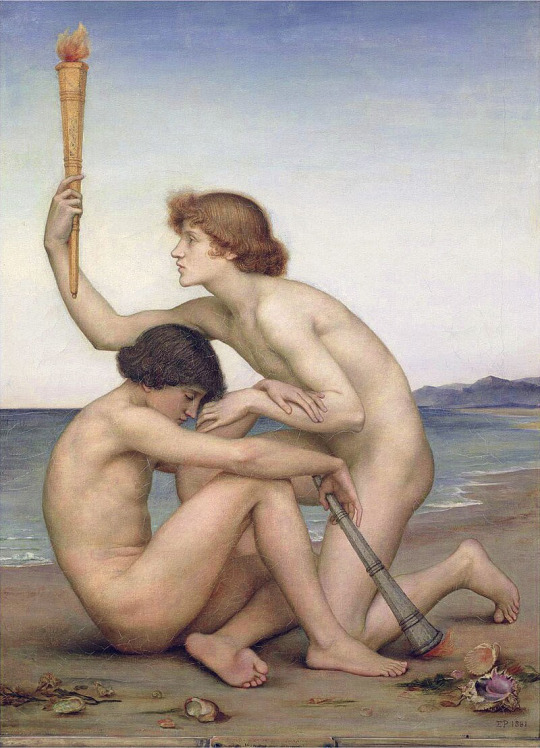
Phosphorus and Hesperus, 1881 - oil on canvas.
— Evelyn De Morgan (England, 1855–1919)
In Greek mythology, Phosphorus is the god of the planet Venus in its appearance as the Morning Star and Hesperus is the Evening Star, the planet Venus in the evening.
#greek mythology#greek gods#greek pantheon#hellenic polytheism#art#hellenic#hellenic gods#hellenism#oil on canvas#oil painting#greek deities#ancient greek mythology#greek myth#ancient greece#helpol#Phosphorus#Phosphorus deity#hesperus#Hesperus deity#oh i love them#painting#classical art#greek myth art#traditional art#evelyn de morgan#pre raphaelite#pre raphaelism#lucifer#lucifer deity#morning star
51 notes
·
View notes
Note
it’s ok if you’re not still doing this but i was wondering if i could get some photos of poseidon amphitrite or helios? dealers choice :)
Hey @egg-wyrm ! This is a fascinating ask, at least for me, and I'm going to take the opportunity to talk about syncretization between Helios and Apollon in their solar aspects and how to tell them apart in works of art (I'd also love to make a post for Poseidon & Amphitrite, so stay tuned! They’ll come up within the next week or so).
The syncretization of Apollon and Helios is a very old concept, going back to the Hellenistic Age (323 BCE - 31 BCE). It’s no secret that artists have conflated the two in their works, reliably using them interchangeably. There are only two details in paintings that separate them from each other: the aureole, and a chariot pulled by horses, which are sometimes flaming, and other times just winged. So we end up with pieces such as these:


Helios as the Personification of Midday by Anton Raphael Mengs, 1765, Palace of Moncloa, Madrid.
Helios on His Chariot by Hans Adam Weissenkercher, 1695, Universalmuseum Joanneum Graz, Austria.
While the name of Helios is given to the subject of the first work, the details, robes, bow and flaming arrow, and the hairstyle are all distinctly associated with Apollon. The aureole is not enough to separate the two, and leads to more questions than answers. The simplest idea is that those attributes are more universally recognizable when associated with the Sun. The second piece is a far more distinct portrait of Helios. He is in the Sun chariot, completed in gold, his hand raises a whip for his horses, he is silhouetted against the eclipsed sun. These are all historically attested attributes for Helios as a solar deity. This was something that struck me about your question and I have challenged myself to include works that function more like the second piece.


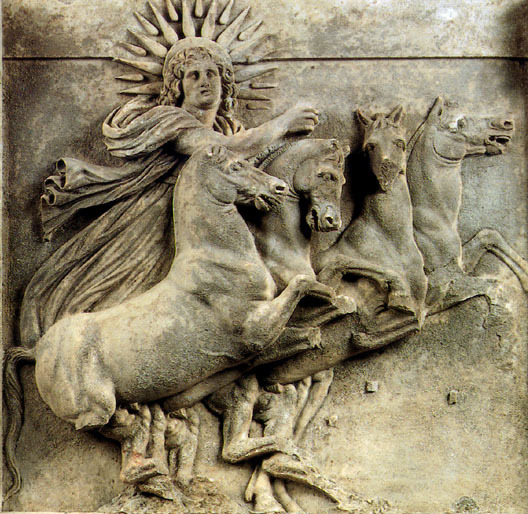

1.) Helios and Selene by Hans Rathausky, Opatijta, Croatia. 2.) Helios in the Sun Chariot, accompanied by Phosphorus and Hermes, by Giuseppe Ignazio Appiani, c. 1760, Nymphenburg Palace, Munich. 3.) Helios in His Chariot, early 4th century BCE frieze, Athena’s Temple. 4.) Helios and the Sun Chariot attributed to Raphael, c. late 15th century, Castello Chigi, near Rome.
#helios#apollo#apollon#solar deity#solar deities#ask response#helios worship#helios art#apollo worship#apollo art#apollon worship#the old gods#art#art history
36 notes
·
View notes
Photo

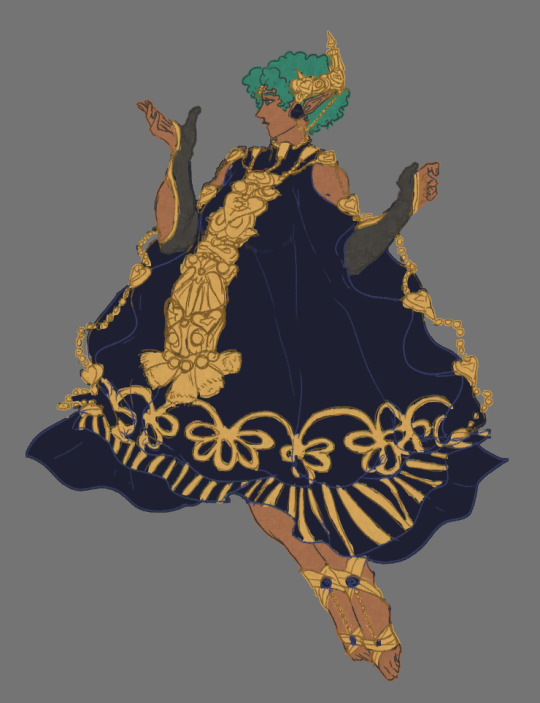
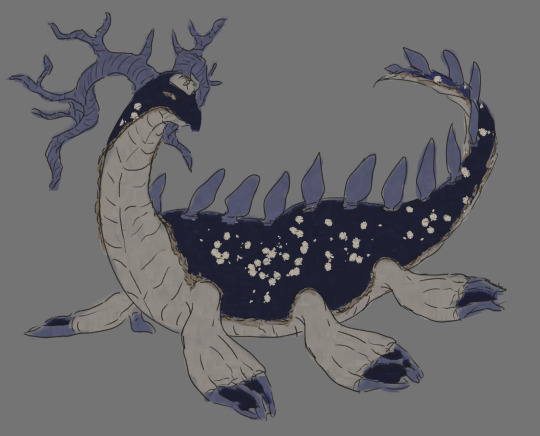
My take of the Star Dragon from FE 3 Houses.
Her name’s Phosphorus, and she’s Sothis’ eldest child. She was the protector of the territories where Derdriu is, though it was called “Starland” as that was the place she landed upon.
Just like Sothis and her brother Astraeus (the Snow Dragon) she had terraforming skills, and so she trained them both and taught them about their purpose in said planet. As they were growing up, Sothis appointed Astraeus as her second-in command and successor in case something happened to her, while Phosphorus would go to the Blue Sea Star (a space station) and leave to find another planet. She’s quite lonely, as she can’t really stay close to other Nabateans because Sothis doesn’t want her to have regrets or miss them when she leaves the planet, and most humans just see her a as deity, so they’re scared of her (doesn’t help she’s 7ft tall).
#fire emblem three houses#fire emblem#my oc#oc: phosphorus#the star dragon#claude von riegan#since they share blood#yes I know the Snow Dragon is called Chevalier by the crest but#it could be a fake name for all we know
23 notes
·
View notes
Text
never in my life have I worked with a deity who so gently nurtures and cares for my wellbeing on every level like phosphorus. I have been able to treat myself more gently than I ever have before, in ways I didn’t realize I needed or wanted.
#I just had to share my gratitude#the level of softness which I am now capable of treating myself with is profound#phosphorus#eosphorus#lucifer#lux fere#my dear sweet venusian bringer of light and tenderness#witchy tings#skáti shit#kata shit#kat shit
3 notes
·
View notes
Text
I'm currently in an "Ettore and Cyprian are descendants of the Sun King" conspiracy theory spiral, and I found a connection between that theory and Cyprian's name! So, in a previous post, I talked about how Cyprian used to mean "a prostitute, a lewd woman, a harlot" or "lewd, licentious, wanton." And the reason behind this meaning is because Cyprian references the island of Cyprus, where people used to worship Aphrodite, Goddess of Love and Sex, in ancient times. So, how does this connect to Ettore or the Sun King?
Well, the villagers call Ettore "il Diavolo" or the Devil. The Devil is also known as Lucifer, who was also known as the "shining one" or the "morning star." According to Wikipedia, the name Lucifer" corresponds to the Greek names Phosphorus Φωσφόρος, "light-bringer", and Eosphorus Ἑωσφόρος, "dawn-bringer". But Lucifer did not refer to just any star, it was "the Latin name for the morning appearances of the planet Venus." The goddess Venus is the Roman counterpart of the goddess Aphrodite!
So, there are two ways in which this connects Ettore to Cyprian and vice versa. First, because of that connection to Venus/Aphrodite. And second and more obvious, a Star is the symbol of the Stewards. As the last Steward (besides Ettore), Cyprian is referred to as the "last star". But how does this connect to the Sun King?
Well, the Sun itself is a star. Furthermore, the imagery of the morning and the dawn that the name Lucifer brings with it is associated with the Sun. In Greek and Roman mythology, Lucifer was connected to many deities, including Sol, known as Helios in Ancient Greek. Much like Lucifer is known as the "shining one", Helios was often given the epithet of Phaethon, which means "the shining". Lucifer the Shining One and Helios the Shining. Notably, during one of Will's memories as Sarcean, the Sun King is described as "a Helios on a chariot."
So, in a very convoluted way, I have connected Ettore, Cyprian, Lucifer, and the Sun King all together 😅. Also, there's this passage at the end of Dark Heir that subtly suggests the Lady, the Stewards, and more specifically, Cyprian will continue the light bringing of the Sun King:
"The Light?" said Sarcean. "Today I have put out the sun."
"Light is not something you can extinguish," she said. "Even in the darkest night, there is a star."
Will gasped and came back to himself.
Cyprian stood in front of him, holding a sword.
Interestingly, this connection to the Sun King, the Light, and Lucifer also touches the Blood of the Lady. Visander calls Elizabeth "Lightbringer," which is possibly an even more direct reference to Lucifer than Ettore's nickname. There could also be an argument that James/Anharion's "fall from the light" is also a subtle reference to Lucifer. What does this all mean? I can't say. Maybe nothing. Maybe everything 👀
22 notes
·
View notes
Text
CW: Religious themes
The Rift: Overview
Location
The world we live in, this realm or universe, is one of many. Naturally, there are many universes similar to ours, and many different. Universes with similar contents and laws form clusters called multiverses. The space between these multiverses, both finite and infinite, is called the Rift.
Description
The Rift is the main domain of most Celestials and their ascended followers. Mortals can traverse the Rift dreams. The Rift is as much a realm as it is a living organism. It can alter its layout, create living beings and defend itself. These events are called "shifts" and during them, the layout of the Rift drastically changes. They are preceded by a loud siren-like whirring noise.
The Rift is aware of everything happening inside of it, meaning that if an intruder enters from any point and said intruder is considered a threat, the Rift will do anything necessary to eliminate them.
Biomes
The biomes of the Rift don't really follow any logic or reason - one could find an ice taiga bordering a tropical forest. Most of them are already well known (like rainforests and tundras), albeit populated by additional species that may or may not be found in other realms. Some of the more unique biomes are listed below.
Red Desert
A vast desert with red-orange sand. During the day the temperatures can reach 50°C and at night they quickly fall to around 10°C. The Red Desert is quite dangerous during the day - the sands are infested with an unknown species of carnivorous arachnid, which attacks any living being that sets foot on the sand. These arachnids are only active at high temperatures, which means that one is safe at night and around oases.
Ashwood
Thin forests comprised mainly of charred trees, burnt shrubs and grass covered in ash. Despite their appearance, all plants appear to be thriving. The forests are warm and humid and the climate, as well as the soil, are perfect for growing crops.
Nether
This infernal biome is dry and hot and most of the vegetation is either burnt or perpetually on fire. The soil and water are highly acidic due to large concentrations of sulfur, chlorine and red phosphorus . The air contains hydrogen chloride, sulfur trioxide and hydrogen cyanide. Lava is also more common here than anywhere else. One should not enter this biome without protective gear.
Aether
Polar opposite of the Nether, but also quite similar to it. This is a cold biome with temperatures below -10°C at all times, harsh weather and hardly any rain. The water and soil are alkaline with high quantities of calcium, magnesium and beryllium.
Wetlands
The term "wetland" actually refers to many different types of bogs, swamps and marshes, which mainly differ from one another through the liquid substance that renders them wetlands. Said liquid can range from water to tar, to lava, to blood or anything else.
Religious overview
The inhabitants of the Rift, hereafter referred to as "Rift dwellers", are similar in that they all worship one or more Celestials residing in this realm. Said Celestials - Gods, Lesser Gods, Deities, Demigods and Spirits (and occasionally Angels and Demons) are much closer to their followers than one might expect, answering their prayers and frequently communicating with them.
In the Rift, worship is not viewed as religion but rather as a part of a lifestyle. For example, Shuggor - God of life, death, decay and rebirth, demands respect for nature. As a result, most (if not all) of his followers practice gardening or agriculture, and their offerings to him are portions of their harvest.
Hunting (in most cases) and live sacrifices are forbidden and anyone who practices them is punished accordingly. Celestials that demand such activities from their followers are banished from the realm.
In the Rift memory is cherished and preserved. One must not forget one's object/s of worship - those that guided them towards a better life, and one's roots - the path they've walked to achieve said better life. Some memories are rather painful, but it is important that one has survived and grown.
2 notes
·
View notes